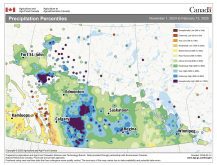Hog prices appear to be dodging the fourth-quarter bullet.
Although the always-scary last three months of the year are upon producers, prices aren’t slumping but instead have found some recent strength, despite farmer fears and trade disputes.
“I’m pretty optimistic about it,” said Steve Meyer, well-known hog market analyst with Kerns and Associates of Ames, Iowa.
“The sense of the marketplace is that supplies are reasonably snug.”
That should be a relief to farmers who saw their usually comfortably supported summer pig market collapse in July and August, dropping to below US$45 per hundredweight on the Chicago December lean hogs contract.
Read Also

Organic farmers urged to make better use of trade deals
Organic growers should be singing CUSMA’s praises, according to the Canadian Chamber of Commerce.
That brought with it grave fears that the fourth quarter could be apocalyptic, since the biggest and longest selloffs tend to occur in the fourth quarter.
However, at the end of August, the market recovered much of its lost value, returning to the $53 to $60 per cwt. range and staying there now for about two months.
Prices aren’t great, and local basis levels like those in Alberta have been causing additional pain, but most hog farmers in OK financial condition can limp through a patch of prices like those recently offered.
The biggest hit to hog markets in the fourth quarter tends to be packer capacity, as hogs grow faster in the cool months of autumn, a string of holidays reduces slaughter rates and grimness grips the markets.
But Meyer said many of the potential bearish factors are being alleviated.
The new slaughter plant in Sioux City, Iowa, has introduced its second shift and is on course to slaughter 4,000 head per day.
Hog weights, which in recent years have steadily trended higher, creating more pork per pig, are flat year-on-year.
And the U.S. hog herd is surprisingly stable, rather than growing the 3.5 percent expected by the U.S. Department of Agriculture.
“We’re barely different than a year ago,” said Meyer.
That’s good news for pork and pig prices.
“We’re thinking we’ll see these prices hang in there until the end of the year.”
Further optimism is coming from the successfully completed North American Free Trade Agreement renewal, Meyer said. Not only does that lift the uncertainty that was hanging over the industry about the medium-term and long-term prospects for the continental industry, but also brings hopes that hams will soon flow south over the Rio Grande again.
U.S. ham sales to Mexico have continued despite the Mexican tariff imposed as a response to the U.S. tariffs on foreign steel, but the tariffs have chopped the price of each ham sold. If the Trump administration drops the steel and aluminum tariffs, the pork penalty should be lifted.
“If you put the price of hams up $8 to $10, that’ll be better for everybody, especially the United States and Canada,” said Meyer.
The metal tariffs are still in place but Trump is expected to lift them if the new NAFTA deal is approved.
U.S. pork sales have also been affected by another of Trump’s trade scraps, with China hitting U.S. pork in response to U.S. tariffs on Chinese goods.
Unlike the Mexican tiff, however, Meyer doesn’t think the China crisis means much to U.S. pork prices right now.
“We’re still shipping some product to China. We probably weren’t going to ship much more anyway.”
Ironically, this trade dispute might actually be helping U.S. pork profitability rather than harming it, at least temporarily.
“It’s had a huge impact on soybean prices.”
Soybean meal prices make up a significant share of the cost of producing a pig, so although pork values have dropped a few cents, feed costs have declined much more, which should lead to better returns for farmers.
“Anything we’ve lost on exports we’ve probably gained on the feed cost side,” said Meyer.















